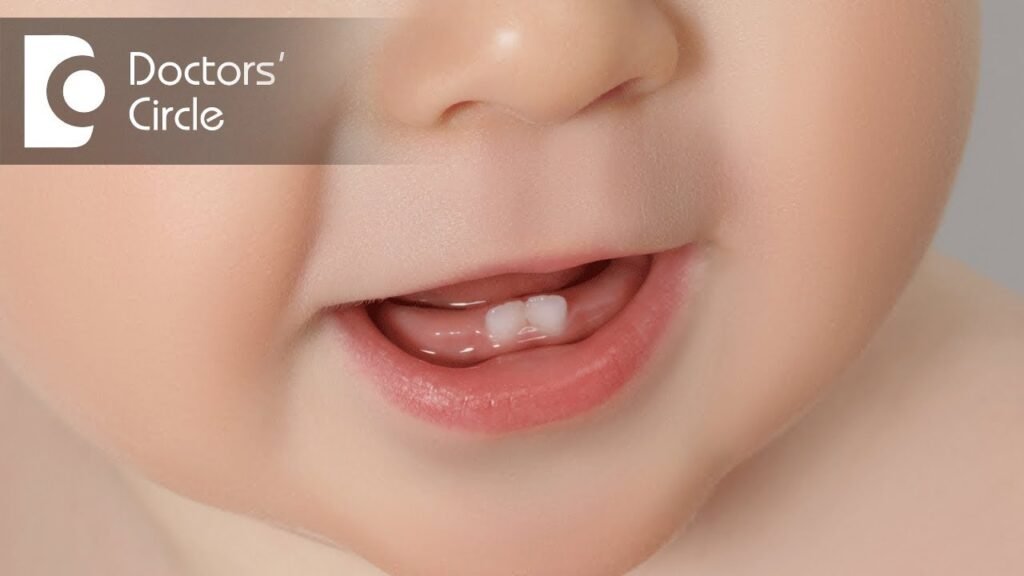Teething Timeline: How Long for Teeth to Come In

Are you eagerly awaiting your baby's first tooth? Many new parents wonder, How long does it take for teeth to come in? The answer varies, but typically, the first tooth emerges between 4 and 7 months of age. Keep reading to learn more about the teething process and helpful tips for soothing your little one's discomfort.
How long does it take for a tooth to fully erupt?
Witness the magical transformation as your little one's smile blossoms with each tooth that emerges! On average, expect four teeth to make their grand entrance every six months until all primary (baby) teeth have arrived, typically around 30 months of age. With each tooth taking about 8 days to fully erupt, marvel at the unique pace at which your child's radiant grin comes to life. Embrace the journey as their dental milestones unfold, one tooth at a time.
How long does it take for teeth to come in once teething starts?
Teething is a natural process that can cause discomfort for babies, but it typically only lasts for a short period of time. According to research, each tooth or pair of teeth should only cause pain for just over a week, with five days leading up to the appearance of the tooth and three days afterwards. So, while teething can be a tough time for both parents and babies, it's important to remember that the discomfort is temporary and will pass relatively quickly.
How long does it take for a new tooth to fully come in?
After a child loses a baby tooth, it can take up to 6 months for the permanent tooth to start appearing. During this time, you may notice the top of the adult tooth coming through the gumline. However, it can take up to 12 months for the new tooth to fully grow in and take the place of the baby tooth. This process is a natural part of a child's dental development and varies from child to child.
When a baby tooth is lost, the permanent tooth underneath has already been developing and is ready to take its place. As the permanent tooth moves into position, it resorbs the roots of the baby tooth, making room for itself to fully grow in. This process can take several months, but it is important for the new tooth to be given the time it needs to properly establish itself in the mouth.
It is important to monitor the progress of new teeth coming in and to maintain good oral hygiene during this time. Regular dental check-ups can also help ensure that the new teeth are growing in properly and that any potential issues are addressed early on. Understanding the timeline for new teeth to come in can help parents and caregivers support a child's dental development.
Teething Troubles: A Guide to Your Child's Tooth Development
Teething Troubles: A Guide to Your Child's Tooth Development
As a parent, it's important to understand the stages of your child's tooth development to help navigate through the teething process. From the eruption of the first tooth to the shedding of baby teeth, each milestone plays a crucial role in your child's oral health. By being aware of common teething troubles such as swollen gums and increased drooling, you can provide comfort and relief to your little one during this challenging time.
With proper care and attention, you can help your child transition smoothly through each stage of tooth development. By establishing good oral hygiene habits early on, such as regular brushing and dental check-ups, you can set the foundation for a lifetime of healthy teeth. Remember, teething may be a temporary challenge, but with patience and guidance, you can help your child grow into a confident and cavity-free smile.
Smile Bright: Understanding the Teething Process
Are you a new parent or caregiver trying to understand the teething process? Look no further than Smile Bright! Teething is a natural developmental stage in a baby's life, but it can be a challenging time for both the baby and the caregiver. Understanding the signs and symptoms of teething can help you provide the best care and comfort for your little one.
During the teething process, a baby's first set of teeth, also known as primary or baby teeth, begin to emerge through the gums. This can cause discomfort for the baby, leading to symptoms such as irritability, drooling, and a strong urge to chew on objects. As a caregiver, it's important to provide soothing remedies such as teething toys or chilled washcloths to help alleviate the baby's discomfort.
It's important to remember that teething is a temporary phase, and providing love and support during this time can make a big difference for both the baby and the caregiver. By understanding the teething process and being prepared for its challenges, you can help your little one smile bright through this developmental milestone.
In summary, the process of teeth coming in can vary from child to child, typically beginning around 6 months of age with the eruption of the lower central incisors. While most children will have a full set of primary teeth by the age of 3, it is important to remember that each child develops at their own pace. If you have concerns about your child's tooth development, be sure to consult with their pediatric dentist for guidance and reassurance. Remember, patience is key as your little one's smile continues to grow and evolve.